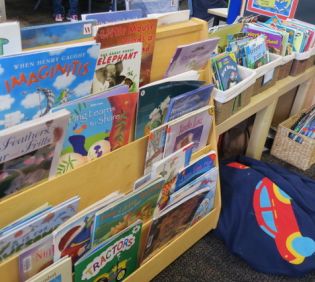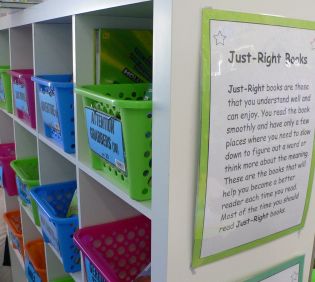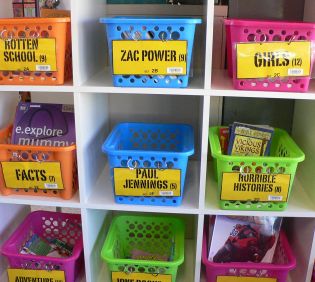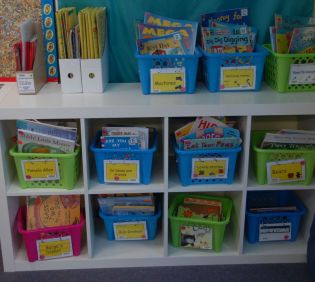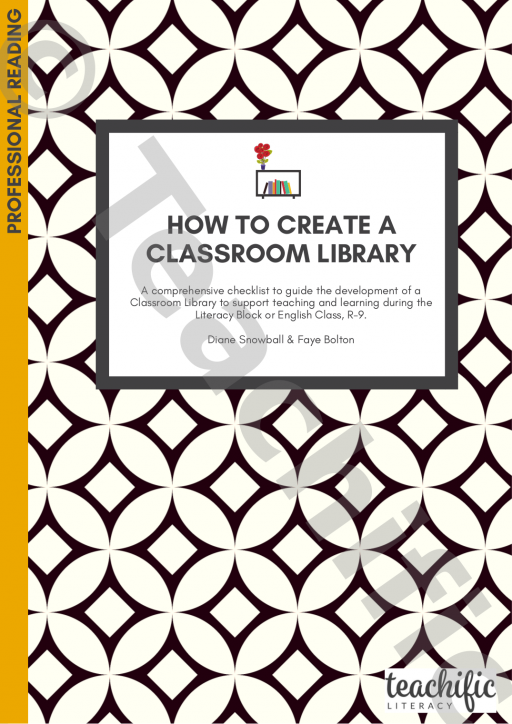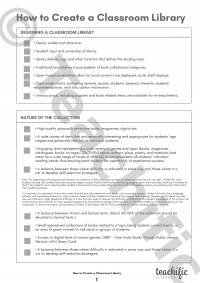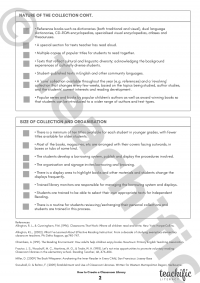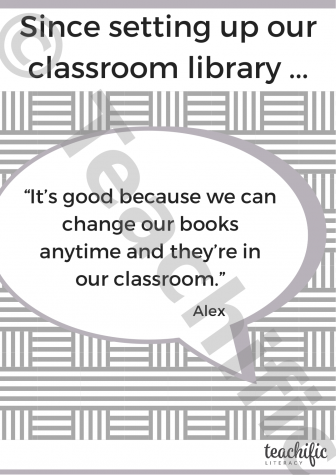About this teaching resource
- Are you looking to improve your students' reading achievement?
- Do you wonder whether you are being effective for all students?
- Classroom Libraries are the way to start achieving this easily
- See the Classroom Library checklist resource here on Teachific (by Diane Snowball and Faye Bolton). and it's FREE!
- See the video of a year 6/7 teacher and her students talking about how she started growing her Classroom Library
Some simple beginning 'how to' steps for you!
- Create a dedicated and inviting space
- Organise for books to be displayed in inviting ways: with covers facing out, sorted into categories/themes/genres in labelled baskets, on book shelves
- Secure a budget to buy books for your classroom library
- Have your students choose books from the school library to add to the classroom library
- Involve your students in curating, organising, sorting, maintaining, growing and managing their Library
- Keep a wish list of books students would like in their library to ensure they see themselves represented in this place
- Organise for each student to have a personal Book Box/Bag/Wallet to store books borrowed from the classroom library so that they can continue to read the books daily during Independent Reading and Home reading.
Australian curriculum alignment
Year K-6
There are many different ways to engage with literature, ranging from personal preferences for literature to the way in which texts reflect the context of culture and situation in which they are created. The appreciation of literature in one or more of these ways provides students with access to mediated experiences and truths that support and challenge the development of individual identity. Through engagement with literature, students learn about themselves, each other and the world.
English educators use many ways of categorising texts. The descriptions of texts used in the Australian Curriculum: English are based on practical as well as conceptual considerations. The specific designation of a strand labelled ‘literature’ is aimed at encouraging teachers working at all year levels not only to use texts conventionally understood as ‘literary’, but also to engage students in examining, evaluating and discussing texts in increasingly sophisticated and informed ‘literary’ ways.
The term ‘literature’ includes literary texts from across a range of historical and cultural contexts that are valued for their form and style and are recognised as having enduring or artistic value. While the nature of what constitutes literary texts is dynamic and evolving, they are seen as having personal, social, cultural and aesthetic value and potential for enriching students' scope of experience. Literature includes a broad range of forms such as novels, poetry, short stories and plays; fiction for young adults and children, multimodal texts such as film, and a variety of non-fiction. Literary texts also include excerpts from longer texts. This enables a range of literary texts to be included within any one year level for close study or comparative purposes.
The range of literary texts for study from Foundation to Year 10 comprises classic and contemporary world literature. It emphasises Australian literature, including the oral narrative traditions of Aboriginal and Torres Strait Islander Peoples, as well as the contemporary literature of these two cultural groups. It also includes texts from and about Asia.
Reviews
There are no reviews for this resource yet, why not write one?
Report a problem
Please log in to report a problem with this resource
Want this teaching resource?
Members get great benefits such as FREE access to premium resources like this one, discounts on courses and more.
Download includes: PDF 3 pages 945 kb

